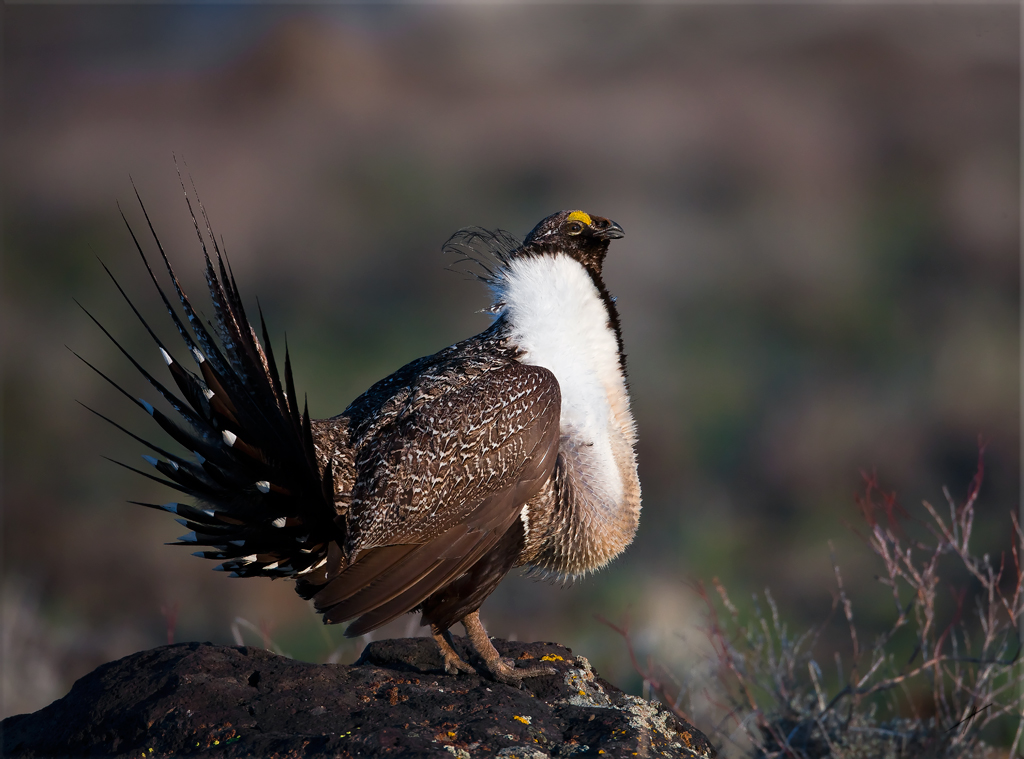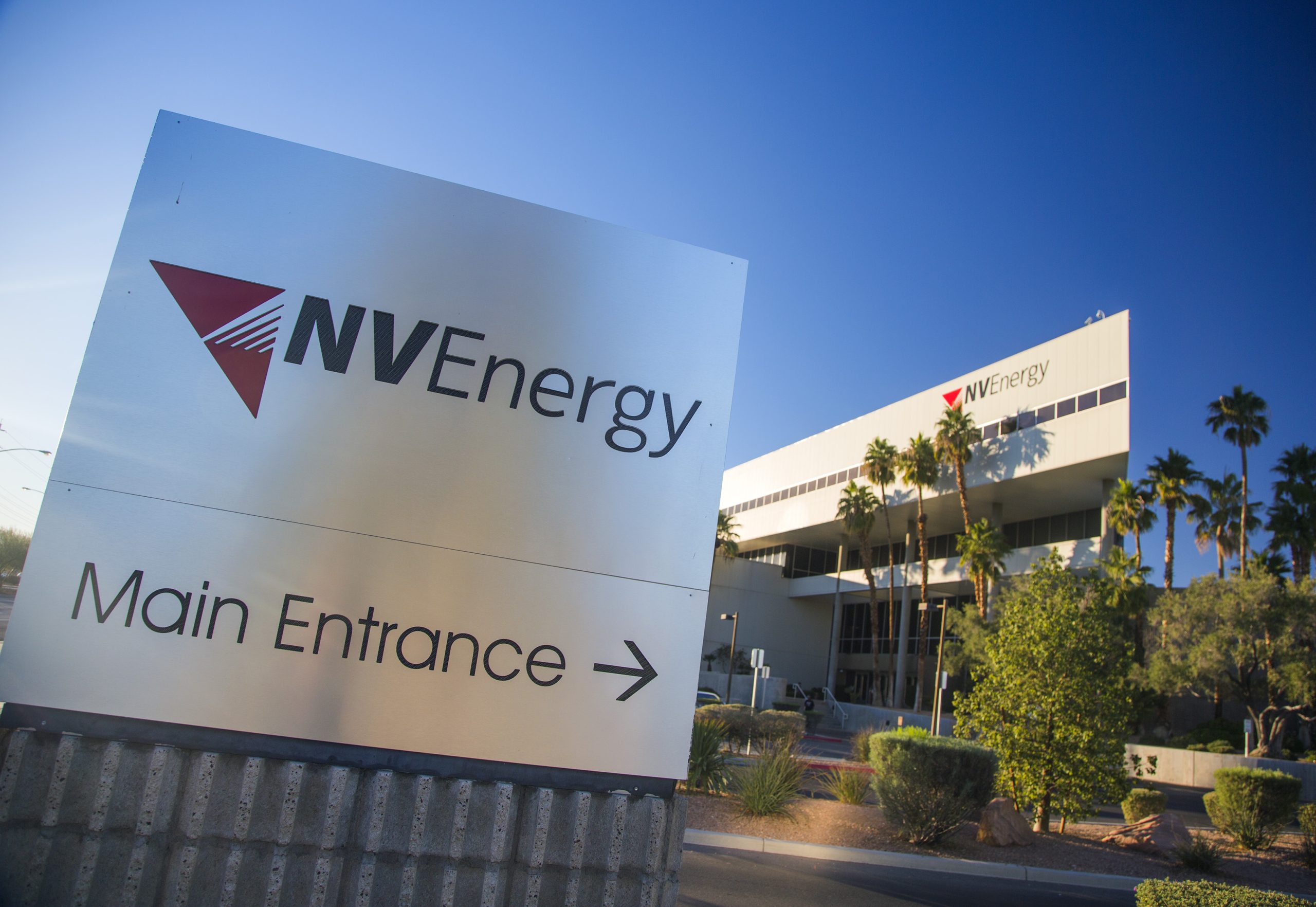Greenlink West, a costly large-scale transmission line set to run between Las Vegas and Reno, received a final stamp of approval Monday from the Department of Interior.
Federal officials were on hand in Las Vegas to announce approval of the transmission line, which will run 350 miles from Las Vegas to Yerington and greatly increase the state’s transmission capacity.
An NV Energy project, it could transmit as much as 4,000 megawatts of clean energy, enough to power roughly 4.8 million homes.
Construction is expected to begin in early 2025 and the project is planned to be online by May 2027.
The Bureau of Land Management (BLM) also published its draft environmental impact statement for the Greenlink North transmission line, the companion project to Greenlink West.
Greenlink North is a 210-mile-long, 3,500-foot-wide utility corridor that will stretch along Highway 50 between White Pine, Eureka, Lander, Churchill and Lyon counties across roughly 84,700 acres of BLM land.
The two projects will tie into the existing One Nevada Transmission Line, partially owned by NV Energy, creating a continuous triangle loop of high-voltage transmission lines throughout the state.
Combined, the lines will provide better service and reliability for customers, Doug Cannon, NV Energy’s president and CEO, said in a press release.
“Greenlink West strengthens our transmission system and creates greater access to Nevada’s resource-rich renewable energy zones, which will help the state achieve its de-carbonization goals and move Nevada closer to a future powered by 100 percent renewable energy and reducing its carbon footprint,” he said.
Since the projects were first proposed in 2019, their combined price tag has nearly doubled. Their original estimated cost of $2.5 billion has since increased to $4.24 billion.
NV Energy estimates the two Greenlink projects will generate $690 million in economic activity and create 4,000 jobs.
The cost of the projects will be split between NV Energy’s wholesale transmission customers, including large casinos that don’t get their energy directly from the utility, and customers statewide. Southern Nevada customers are expected to foot about 70 percent of costs while Northern Nevada customers will pay about 30 percent, the Las Vegas Review-Journal previously reported.
Project costs are expected to be recovered for more than 70 years.
Both Greenlink projects have garnered concern from environmental and citizen groups. The Greenlink North project will be routed through a section of Tule Fossil Springs National Monument in Southern Nevada, as well as through land owned by The Nature Conservancy.
Environmental groups have urged the BLM to consider realigning the Greenlink North transmission line along Interstate 80 to the north. As it currently is proposed, it will run within greater sage-grouse habitat management areas and mating grounds.
The BLM is currently updating its greater sage-grouse conservation and management plan. The agency manages the largest single share of sage-grouse habitat in the country — nearly 67 million acres. With development, climate change and wildfires across the West, the birds’ populations have dwindled from several million to fewer than 800,000. A local population of greater sage-grouse needs up to 40 square miles of intact landscape to stay healthy.
“The cumulative build out of Greenlink North and associated solar projects would represent a fundamental change to the ecology and culture of central Nevada, one of the wildest and least developed places in the United States,” Patrick Donnelly, Great Basin director for the Center for Biological Diversity, said in an email. The threat to the greater sage-grouse is of particular concern, he said, calling the project “one of the most harmful actions the BLM has ever permitted” in regard to the future of the birds.
In an attempt to mitigate impacts to the birds, the BLM is requiring NV Energy to install anti-perching deterrents on transmission poles to minimize predation by ravens.
The final environmental impact statement for the northern project is expected to be available in March, with a final decision anticipated in July. It is expected to be in service by December 2028.
The advancement of the Greenlink projects comes on the heels of the BLM’s recently released Western Solar Plan, which potentially opens millions of acres of public land in Nevada to solar development.

Additional renewable projects advanced
Also on Monday, the Department of Interior advanced two additional renewable-energy projects in the state.
A final decision was issued for the Libra Solar Project in Lyon and Mineral counties. With the ability to generate and store as much as 700 megawatts of energy, the project will be the largest solar-plus battery storage project in Nevada and one of the largest in the United States.
The public comment period was also opened for the environmental impact statement for the 300 megawatt Bonanza Solar Project in Clark and Nye counties. The proposed project would include battery storage.
Since the start of his presidency, President Joe Biden has approved 41 renewable-energy projects on public lands with the goal of permitting 25 gigawatts by 2025. The federal government is also processing an additional 55 utility-scale renewable-energy project proposals across the West.

